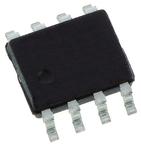●The TPIC1021 is the LIN (Local Interconnect Network) physical interface, which integrates the serial transceiver with wake up and protection features. The LIN bus is a single wire, bi-directional bus typically used for low-speed in-vehicle networks using baud rates between 2.4 kbps and 20 kbps.
●The LIN bus has two logical values: the dominant state (voltage near ground) represents a logic 0 and the recessive state (voltage near battery) and represents logic 1.
●In the recessive state the LIN bus is pulled high by the TPIC1021’s internal pull-up resistor (30 kΩ) and series diode, so no external pullup components are required for slave applications. Master applications require an external pullup resistor (1 Ω) plus a series diode.
●The LIN Protocol output data stream on the TXD pin is converted by the TPIC1021 into the LIN bus signal through a current limited, wave-shaping low-side driver with control as outlined by the LIN Physical Layer Specification Revision 2.0. The receiver converts the data stream from the LIN bus and outputs the data stream via the RXD pin.
●In Low Power mode, the TPIC1021 requires very low quiescent current even though the wake-up circuits remain active allowing for remote wake up via the LIN bus or local wake ups via NWake or EN pins.
●The TPIC1021 has been designed for operation in the harsh automotive environment. The device can handle LIN bus voltage swing from 40 V down to ground and survive –40 V. The device also prevents back feed current through the LIN pin to the supply input in case of a ground shift or supply voltage disconnection. It also features under-voltage, over temperature, and loss of ground protection. In the event of a fault condition the output is immediately switched off and remains off until the fault condition is removed.

 Part 3D Model
Part 3D Model
